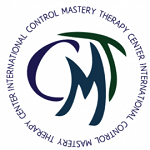In 1958 Weiss began his investigations through the close review of the process notes of an analysis. Weiss noticed certain phenomena, which could not be explained by Freud’s original theories, but were compatible with Freud’s later writings. He noted, for example, that patients may acquire insight spontaneously without the therapist’s interpretation. Weiss published his first article, “Crying at the Happy Ending,” in 1952 (Psychoanalytic Review, Vol 39, p. 333).
In this one-page article Weiss explored his observation that people could and did lift their repressions when they believed that it was safe to do so. In 1965 Hal Sampson joined Weiss. They met daily to collaborate on researching Weiss’ theories. This collaboration between Weiss and Sampson proved to be enduring, rich and rewarding. Together they successfully directed many research projects, which tested the predictive powers of Weiss’s theory of psychotherapy. After publishing their first empirical work in 1972, they recognized the need for a group of co-workers familiar with their hypotheses and methods. In that year they founded the Mt. Zion Psychotherapy Research Group with a core of 10 members. In 1988, the name of the Research Group was changed to the San Francisco Psychotherapy Research Group (SFPRG).In 2000 a clinic and training center was added. In 2017 an additional center was formed called the International Control Mastery Therapy Center (CMT Center) to focus on teaching worldwide.
Over four hundred researchers and clinicians worldwide now participate in the ongoing work of Control Mastery Theory. Well over 500 papers have been published which present research or explore new directions for study of Weiss’s theory. In 1986 Weiss, Sampson, and the Mt. Zion Psychotherapy Research Group published a book entitled, The Psychoanalytic Process: Theory, Clinical Observation and Empirical Research, which presented innovative ideas about the theory and the research that supports it. In 1993, Weiss published How Psychotherapy Works, a readily understandable and compelling book that presented additional clinical ideas and research on the effectiveness of psychotherapy.
